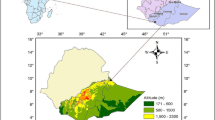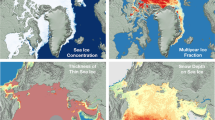Abstract
The 0.5Ü×0.5× grid resolution distribution of lightning density in China and its cir cumjacent regions have been analyzed by using the satellite-borne OTD (Apr 1995–Mar 2000) and LIS (Dec 1997–Mar 2003) databases. It is shown that: (–) Firstly, the variability of the lightning density (LD) is particularly pronounced over the different subareas, 9 times greater over the south than the north side of Himalayas Mountains, 2.5 times greater over the eastern than the western area of China. While the maximum and minimum LD are respectively 31.4fl/km2/a (in Guangzhou region) and less than 0.2fl/km2/a (in the desert of western China). Secondly, the LD of China’s continent regularly varies with latitude and distance off coast, which is consistent with annual mean precipitation in varying trend. In conclusion, the Qinghai-Tibet Plateau, the China’s three-step staircase topography and the latitude are three important factors affecting macro-scale characteristics of the LD distribution. (–) The regional differences in LD distribution are closely related to the mesoscale orographic forcing. In the eastern humid regions of China, the high LD belts often appear along the mesoscale mountains (with south-north or northeast-southwest direction, 500–1500 m ASL) and hills, while the low LD belts often appear on the plain and basin (valley) between the mountains. But in the western cold and arid regions of China, the relatively high LD belts mostly appear on the Qinghai Lake area of the southern side of Qilian Mountain, Yili River valley, the basin between Tanggula Mountains and Nyainqêntanglha. On the coastal land, the high LD centers appear in regions where mountain and hill and large cities are located. This seems to be related to the interaction between the sea-land breeze and mountain-valley wind or city heat island effect. (ê) The China Sea is one of the relatively high LD zones on global oceans. It is very interesting that a high LD belt is located along the Kuroshio area. It is a new fact that the high temperature and high salinity characteristics of Kuroshio have obvious effect on the local deep convective activity. In addition, the intracloud/cloud-to-ground lightning ratio is close to 3.0 in Anhui Province.
Similar content being viewed by others
References
Sun Jingqun, Atmospheric Electricity Fundament (in Chinese), Beijing: China Meteorological Press, 1987, 206–255.
Zhang Minfeng, Feng Xia, A study of climatic features and anomalies of the thunderstorm in China, Journal of Tropical Meteorology (in Chinese), 1998, 14(2): 156–162.
Zhang Jiacheng, Climate of China (in Chinese), Beijing: China Meteorological Press, 1991.
Mackerras, D., Darveniza, M., Orville, R. E. et al., Global lightning total, cloud, and ground flash estimates, Journal of Geophysical Research, 1998, 103(D16): 19791–19809.
Goodman, S. J., Buechler, D. E., Knupp, K. et al., The 1997-98 El Niño event and related wintertime lightning variations in the Southeastern United States, Geophysical Research Letters, 2000, 27: 541–544.
Williams, E. R., The Schumann resonance: A globe tropical thermometer, Science, 1992, 256: 1184–1186.
Reeve, N., Toumi, R., Lightning activity as an indicator of climate change, Quarterly Journal of the Royal Meteorological Society, 1999, 125: 893–903.
Christian, H. J, Blakeslee, R. J., Boccippio, D. J. eaet al., Global frequency and distribution of lightning as observed by the Optical Transient Detector (OTD), Proceeding 11th International Conference on Atmospheric Electricity, Guntersville, AL, ICAE, 1999, 726–729.
Boccippio, D. J., Goodman, S. J., Regional differences in tropical lightning distributions, Journal of Applied Meteorology, 2000, 39: 2231–2248.
Tao Zuyu, Zhao Xinyi, Climate analysis of lightning in Beijing-Tianjin-Hebei area, Acta Meteorologica Sinica (in Chinese), 1993, 51(3): 325–332.
Tao Shanchang, Meng Qing, Evaluation of ground stroke density distribution and lightning detection efficiency in Beijing-Tianjin- Hebei area, Acta Meteorologica Sinica, 1996, 10(3): 346–355.
Boccippio, D. J., Koshak, W. J., Blakeslee, R. J., Performance assessment of the Optical Transient Detector and Lightning Imaging Sensor: I. Predicted diurnal variability, Journal of Atmospheric and Oceanic Technology, 2002, 19: 1318–1332.
Boccippio, D. J., Driscoll, K. T., Koshak, W. J. et al., The Optical Transient Detector (OTD): Instrument characteristics and crosssensor validation, Journal of Atmospheric and Oceanic Technology, 2000, 17: 441–458.
Ushio, T., Driscoll, K. T., Heckman, S eaet al., Initial comparison of the Lightning Imaging Sensor (LIS) with Lightning Detection and Ranging (LDAR), Proceeding 11th International Conference on Atmospheric Electricity, Guntersville, AL, ICAE, 1999, 738–741.
Thomas, R. J., Krehbiel, P. R., Rison, W. et al., Comparison of ground-based 3-dimensional lightning mapping observations with satellite-based LIS observations in Oklahoma, Geophysical Research Letters, 2000, 27: 1703–1706.
Yan Junyue, Chen Qianjin, Climate of China Sea (in Chinese), Beijing: Science Press, 1993.
Boccippio, D. J., Cummins, K. L., Christian, H. et al., Combined satellite and surface-based estimation of the intracloud-cloud- to-ground lightning ratio over the continental United States, Monthly Weather Review, 2001, 129: 108–122.
Author information
Authors and Affiliations
Corresponding author
Rights and permissions
About this article
Cite this article
Ma, M., Tao, S., Zhu, B. et al. Climatological distribution of lightning density observed by satellites in China and its circumjacent regions. Sci. China Ser. D-Earth Sci. 48, 219–229 (2005). https://doi.org/10.1360/03yd0204
Received:
Issue Date:
DOI: https://doi.org/10.1360/03yd0204




